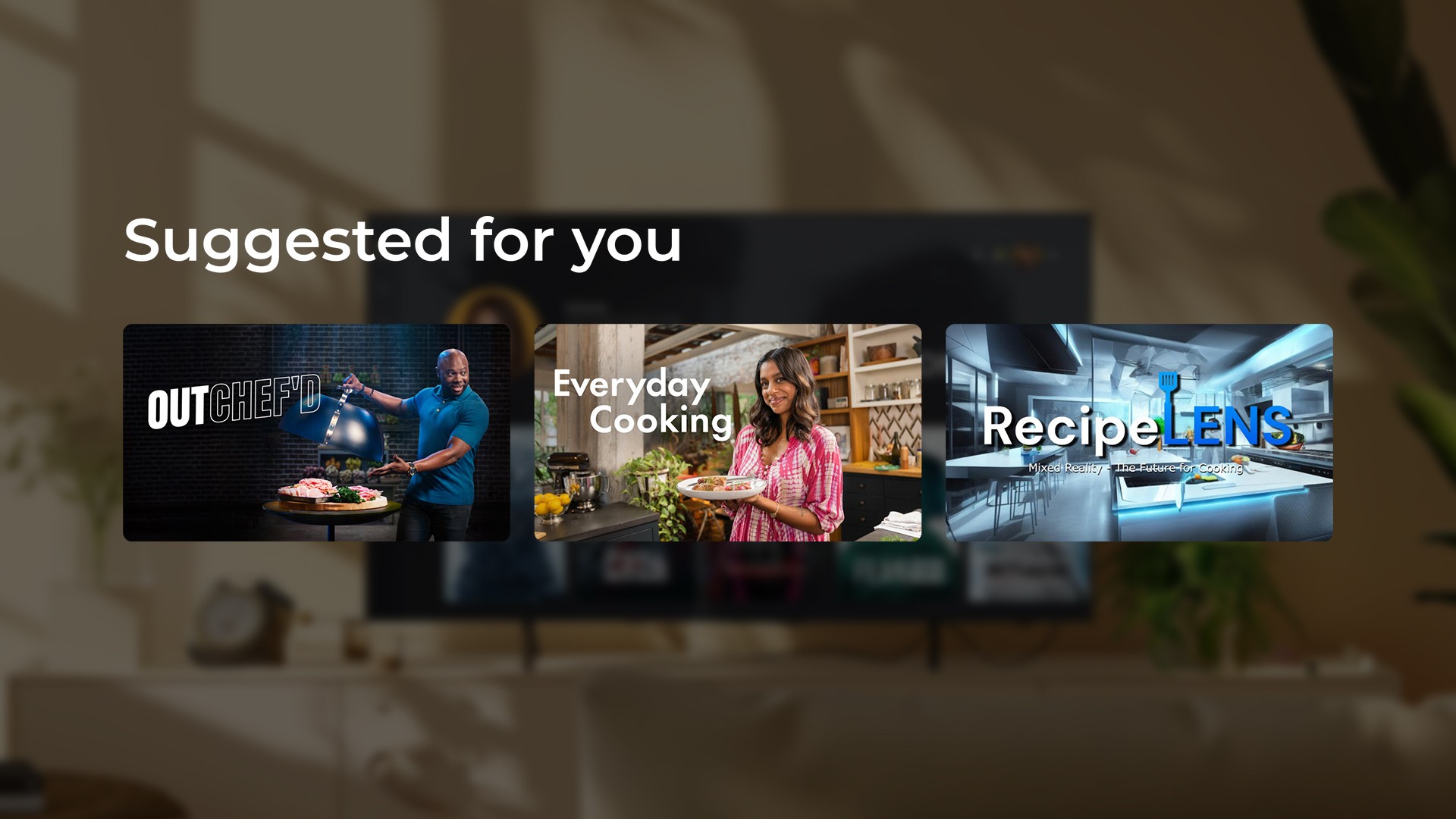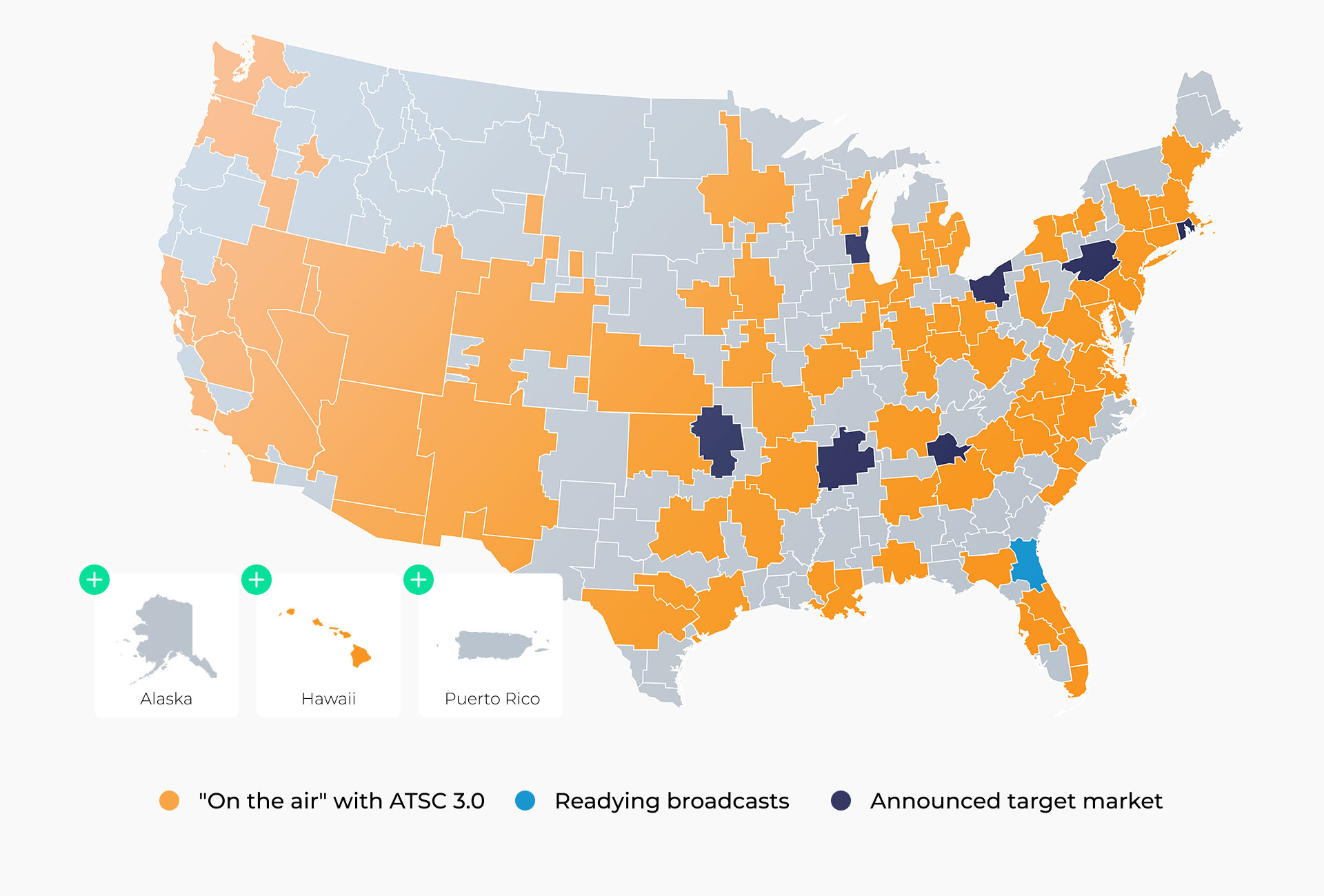Does the broadcasting world really need a revamp and what does it take to be at the forefront of good changes? Exploring the basics, the complexities, and everything in between.
ATSC 1.0 is dead, long live NextGen TV
For the past 30 years, the U.S. broadcast industry has relied on the outdated ATSC 1.0 (Advanced Television Standards Committee) standards to transmit signals over public airwaves. However, today’s world, brimming with the freedom and personalization offered by streaming platforms, has made using ATSC 1.0 like riding a horse to work in the age of Teslas. And this stark contrast hasn’t been lost on viewers, particularly younger ones, who now either avoid over-the-air channels from the start or quickly transition to streaming. Advertisers have also taken notice, shifting their focus to streaming platforms that offer a broader and more engaged audience.
Sensing the pressing need for an upgrade, the Advanced Television Systems Committee decided it was time to retire their old “horse” and unveil a state-of-the-art solution — NextGen TV, the hero of our story.
What is NextGen TV?
NextGen TV is a more business-focused name for the ATSC 3.0 broadcast standard, an upgraded set of terrestrial broadcast standards. It combines the reliability of traditional scheduled broadcasts with the superior audio and video quality of modern technology, as well as opens up exciting possibilities for on-demand and interactive content, bridging the gap between conventional broadcasting and the personalized experience that streaming platforms provide.
And in case you’re wondering whatever happened to ATSC 2.0, the answer is simple — it was considered but never saw the light of day, as it was swiftly overshadowed by the more advanced ATSC 3.0.
ATSC 3.0 benefits that elevate OTA channels far above the competition

ATSC 3.0 isn’t just a tech upgrade — it’s designed to captivate viewers, unlock advanced advertising opportunities, and provide enhanced viewing analytics. For those curious, when will NextGen TV be available in your area? The rollout is ongoing, with coverage in over 70 markets already. But let’s break it down step by step.
What’s in it for broadcasters?
Beyond attracting and retaining viewers and advertisers, broadcasters gain several key advantages:
Effortless scalability
ATSC 3.0’s secret weapon is its future-proof design. The “bootstrap” mechanism acts as a powerful gateway, signaling key theoretical information that enables decoding of complex physical layer frames. Simply put, this means ATSC 3.0 can seamlessly incorporate future enhancements like 8K broadcasting.
Efficient IP content delivery
ATSC 3.0 shines with its one-to-many infrastructure, making it more efficient than broadband’s one-to-one model. This allows broadcasters to transmit data to multiple users simultaneously with a single signal.
What’s the treat for the viewers?
Sharper picture quality
Supporting 1080p and 4K resolutions at up to 120 frames per second, ATSC 3.0 ensures broadcasts look ultra-crisp and smooth. With high dynamic range (HDR) content, viewers enjoy richer contrasts and a broader color spectrum, which creates a truly immersive viewing experience.
Superior sound quality
ATSC 3.0 brings cutting-edge audio with immersive, multidimensional Dolby Atmos surround sound and Voice Plus for enhanced dialogue clarity. The AC-4 codec includes Real-Time Loudness Leveler, ensuring consistent audio levels across scenes and ads, so viewers won’t need to constantly adjust the volume.
Lifesaving enhanced alerts
ATSC 3.0 excels in delivering critical real-time video, voice, and data alerts. Key features include datacasting for detailed multimedia alerts, seamless digital network interoperability, and precise geo-targeting, ensuring that crucial information reaches the right people at the right time.
Mobile reception
NextGen TV supports robust mobile reception, allowing viewers to enjoy live local and national news, popular sports, and entertainment on their mobile devices without relying on cellular data.
Full internet access
Since ATSC 3.0 uses Internet Protocol (IP) for A/V signals, it can broadcast any IP-based data, paving the way for maximum personalization and a diverse content selection.
What’s more, and what’s probably bound to become the major perk for users, is that NextGen TV is free — there would be no need for cable or streaming subscriptions.
Have a question?
Whether you’re curious to learn more about any of the benefits listed or need some clarity on the technical or business side of implementing ATSC 3.0, we’re here just for that!
Interactive experiences and personalized content

Users rejoice!
Viewers with NextGen TVs can now enjoy interactive features that were once limited to over-the-top services. They can rewind shows, pause live TV, and receive enhanced access to local news alerts and weather updates — like a friendly nudge about a deadly rainstorm headed your way.
The viewing experience is becoming less of a passive leisure activity, with real-time engagement features like live polls and Q&A sessions. Users can also place bets on their favorite sports teams, all while the show plays on, or vote on their favorite TV shows, adding a new level of involvement. Additionally, personalized content recommendations provide a VoD-like experience, suggesting similar movies and shows to watch directly through the viewer’s TV.
Advertisers celebrate!
NextGen TV is poised to revolutionize TV advertising by blending broadcast and internet capabilities. This innovation transforms ads from generic broadcasts into personalized, interactive experiences, which raise questions like is NextGen TV free? Well, it’s worth noting that NextGen TV broadcasts will remain free, as it doesn’t require subscriptions like streaming services. Dynamic ad insertion allows for ads tailored to individual viewer profiles, much like online advertising. According to Anne Schelle of Pearl TV, ATSC 3.0 provides broadcasters with digital-level interactivity, including overlays and interactive ads. This technology retains a traditional TV’s broad reach while adding addressability and enhancing monetization for broadcasters. Features like “Start Over” and “Pause Ads” highlight the interactive potential, making ATSC 3.0 a game-changer for TV advertising.
Broadcasters’ toolkit
To seamlessly integrate essential and advanced ATSC 3.0 features across various platforms and customize unique services and content, broadcasters need to employ some technical adjustments and utilize the right frameworks. One particularly user-friendly framework stands out in this regard.
Run3TV
Run3TV is a NextGen TV web platform developed by the ATSC 3.0 Framework Alliance, LLC (A3FA), a subsidiary of Pearl TV. Run3TV provides a starter kit for broadcasters to develop interactive applications within NextGen TV’s ecosystem. Adopted by leading TV manufacturers and broadcasters, Run3TV is currently available in nearly 100 markets and is enabled across all leading NextGen TV devices. Oxagile’s experience with Run3TV also shows that its capabilities open up a treasure trove of possibilities for weaving dazzling interactivity into the NextGen TV streaming.
Broad market penetration and adoption

Throughout 2023, numerous prominent U.S. cities witnessed the rollout of new ATSC 3.0 stations from networks such as Fox, NBC, and Telemundo, significantly boosting local market coverage. For example, Miami, Florida, emerged as a prime NextGen TV market, offering 11 channels to its 1.7 million TV households. Today, NextGen TV is broadcasting in over 70 markets, reaching 75% of U.S. television households.
This expansion into major urban areas underscores the strategic emphasis on regions with high television household densities, thereby optimizing potential viewership and adoption rates.
Moreover, the success of this technology is highlighted by the fact that while U.S. broadcasters have just started to vigorously introduce ATSC 3.0 to American audiences, South Korea had launched ATSC 3.0 back in 2017, now successfully covering more than 80% of its population.
Growing inventory of compatible devices with ATSC 3.0
The bad news is that ATSC 3.0 is not backward-compatible with 1.0, meaning users will need an ATSC 3.0 tuner or a new TV with one to receive broadcasts, making the NextGen TV cost factor still come into play.
The good news, however, is that the marketplace is abuzz with over 100 models of NextGen TV sets available, featuring top names like Samsung, Sony, TCL, and LG. Projections from the Consumer Technology Association (CTA) suggest that by 2025, half of all TVs shipped will be NextGen-ready. This rapid adoption highlights the growing momentum and integration of ATSC 3.0 technology in today’s electronics landscape.
Breaking through the broadcast noise
When a forward-thinking broadcaster teamed up with Oxagile, their vision extended beyond harnessing the power of ATSC 3.0. They sought to design a NextGen TV broadcast app with a distinctive interface that would break free from the common designs that are already saturating the market.
Crafting a distinctive viewer experience
Building upon the Run3TV framework, we introduced a tailored NextGen TV broadcasting application featuring a distinctive, user-friendly interface with localized elements and effortless navigation. Among its capabilities, the app enables viewers to conveniently restart programs, receive personalized updates, and access real-time alerts relevant to their location.
Personalized content
The app offers tailored suggestions for clips, full episodes, and alternative programming across news, sports, and entertainment genres, which users can stream directly from the internet on their TVs.
Data-driven insights
Combining our data expertise with the robust capabilities of Run3TV, we’ve enabled comprehensive audience metrics. This data-driven approach allows for personalized programming and targeted advertising, creating a viewing experience that is both relevant and engaging, while also enhancing marketing effectiveness.
Expand your reach
Give your audience more ways to connect with the content through multi-screen app development.

























